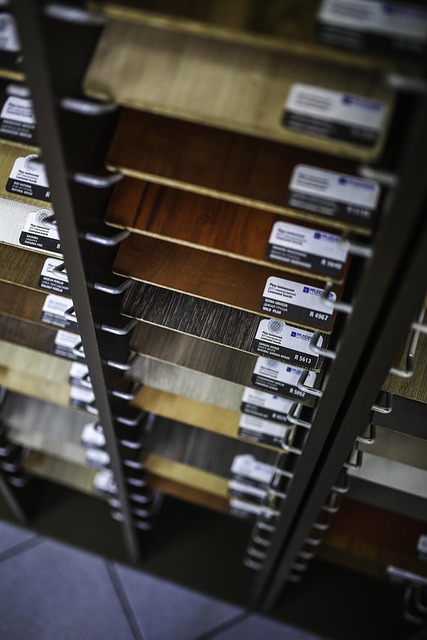Glue Laminated Beams (GLulam) offer superior strength, lightweight properties, and versatility for construction. Ideal for residential and commercial projects, they enable longer spans, reduced material use, and custom designs. GLulam's durability and aesthetic appeal make it a leading choice for builders, catering to modern design needs while promoting sustainability.
Glue laminated wood beams are a modern marvel, offering unparalleled strength and durability for construction projects. This innovative technology combines multiple layers of wood lamination bonded with strong adhesives, creating structural components that surpass traditional beams in load-bearing capacity. In this article, we’ll explore the structure and benefits of glue laminated beams, their common uses in construction, and how they stack up against conventional methods, highlighting their unique advantages and limitations. Discover why these beams are revolutionizing the industry and their diverse applications through this comprehensive guide on glue laminated beams uses.
- Understanding Glue Laminated Beams Structure and Benefits
- Common Uses of Glue Laminated Wood Beams in Construction
- Advantages and Limitations Compared to Traditional Beams
Understanding Glue Laminated Beams Structure and Benefits

Glue Laminated Beams (GLulam) offer a unique structure and host of benefits that make them an increasingly popular choice in construction, especially for custom architectural elements. Each GLulam beam is crafted by bonding together multiple layers of dimensional lumber with strong adhesives, creating a single component with exceptional strength-to-weight ratio. This innovative design allows for longer spans, reduced material use, and enhanced structural integrity compared to traditional wooden beams.
Beyond their structural advantages, GLulams are highly versatile, catering to diverse applications from residential construction to commercial projects. Their affordable pricing and ability to be custom designed make them an attractive solution for both builders and designers looking to create supportive structural components that efficiently meet project requirements. For those seeking durable, efficient, and aesthetically pleasing building solutions, GLulam beams represent a superior choice. Find us at unalam.com to explore the possibilities of this remarkable material.
Common Uses of Glue Laminated Wood Beams in Construction

Glue Laminated Beams Uses: Common Applications in Construction
Glue laminated wood beams, or glulam, are versatile building materials that offer exceptional strength and stability. They are widely used in various construction projects due to their ability to withstand high loads and span long distances. One of the primary applications is in structural framing for residential and commercial buildings, where glulam provides a lightweight yet robust alternative to traditional steel or concrete. These beams can be designed with precision, allowing architects and engineers to create unique architectural elements while complying with local building permit requirements and building codes.
Moreover, glulam’s durability and resistance to moisture make it ideal for outdoor structures like bridges, pergolas, and deck frames. The durability of glulam structures ensures longevity, making them a cost-effective choice. For more information on how glue laminated beams can benefit your construction project, visit us at 18 Clifton St, Unadilla, NY 13849 anytime.
Advantages and Limitations Compared to Traditional Beams

Glue laminated beams offer several advantages over traditional building methods and materials. One of their key benefits is strength—glulam (glue laminated wood) beams can span greater distances with minimal support, making them ideal for creating open floor plans in modern architecture. This versatility is especially valuable in long-span glulam applications like modular construction with glulam, where efficient use of space and cost-effectiveness are paramount. Furthermore, glulam is a sustainable choice, as it utilizes certified wood products, promoting environmental responsibility without compromising structural integrity.
Despite these advantages, there are limitations to consider. Traditional beams often have longer histories in construction, proven over time and with extensive research. They provide familiar and well-understood structural properties, while glulam requires specific manufacturing processes and careful design considerations. Additionally, while modular construction with glulam can streamline building, it may not be suitable for all project types or sites, especially those with unique architectural visions or strict historical preservation requirements. For the best in glulam solutions, visit us at 18 Clifton St, Unadilla, NY 13849 to explore how this innovative technology can enhance your construction projects.
Glue laminated wood beams offer a robust and versatile solution for various construction needs. Their unique structure enhances structural integrity, making them ideal for spanning long distances with minimal support. In terms of uses, these beams are revolutionizing building design, especially in modern architectural structures. Despite their advantages, limitations exist when compared to traditional methods, but ongoing innovations continue to refine their application. For those seeking reliable and efficient structural support, glue laminated beams are a game-changer, ensuring sturdiness and aesthetics in equal measure. Their growing popularity among construction professionals underscores their significance in today’s building landscape.














